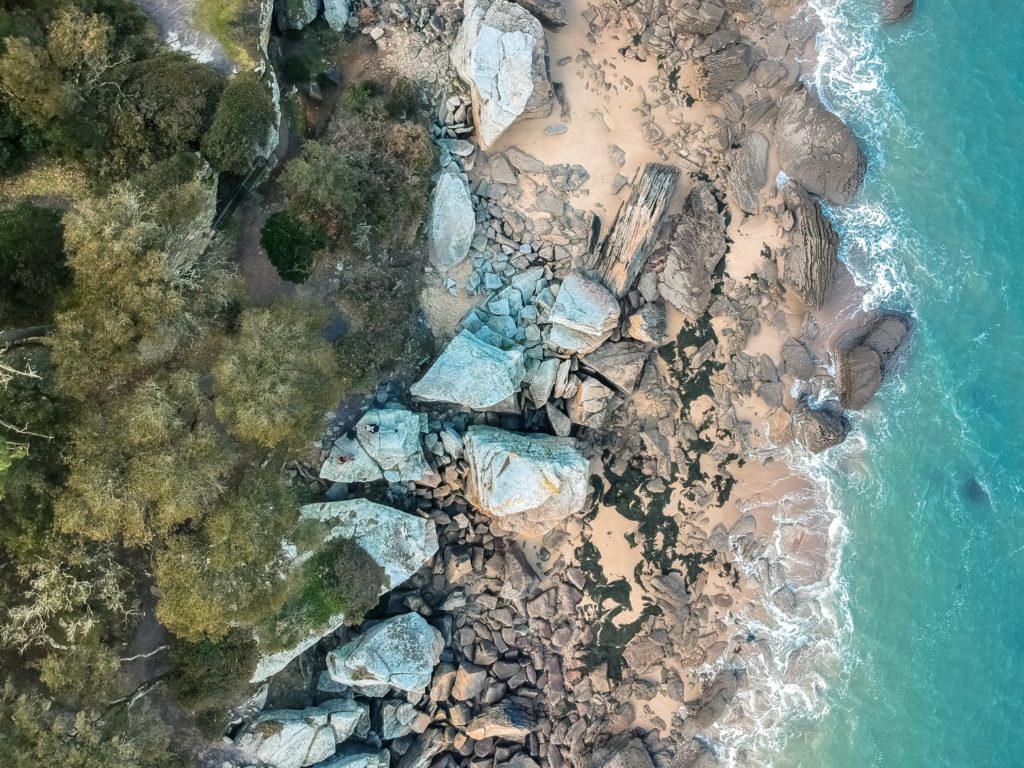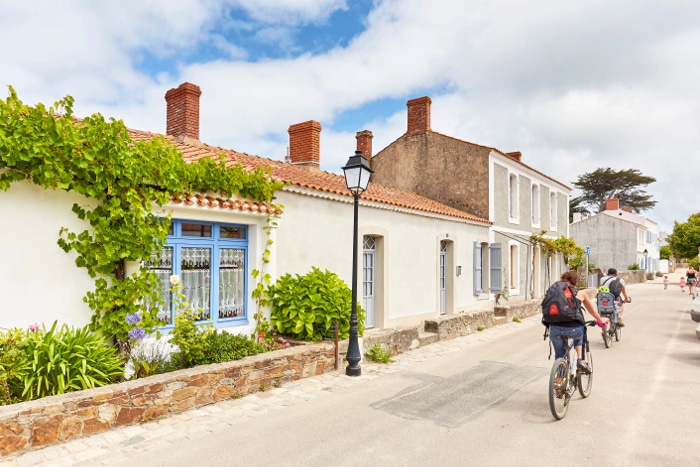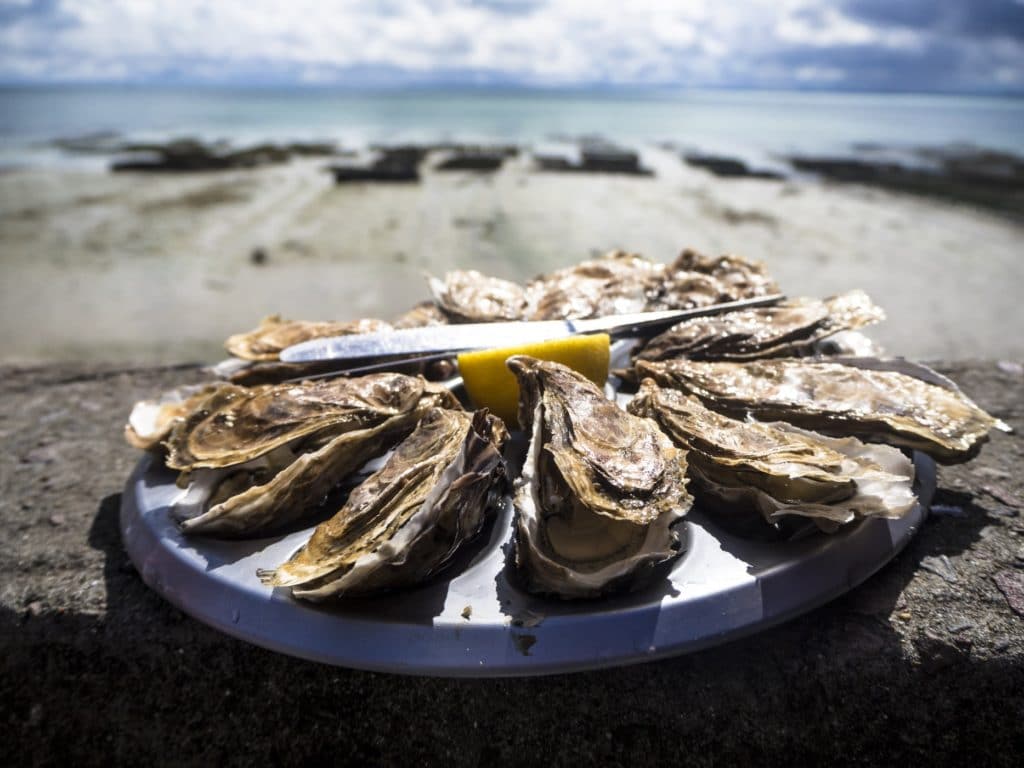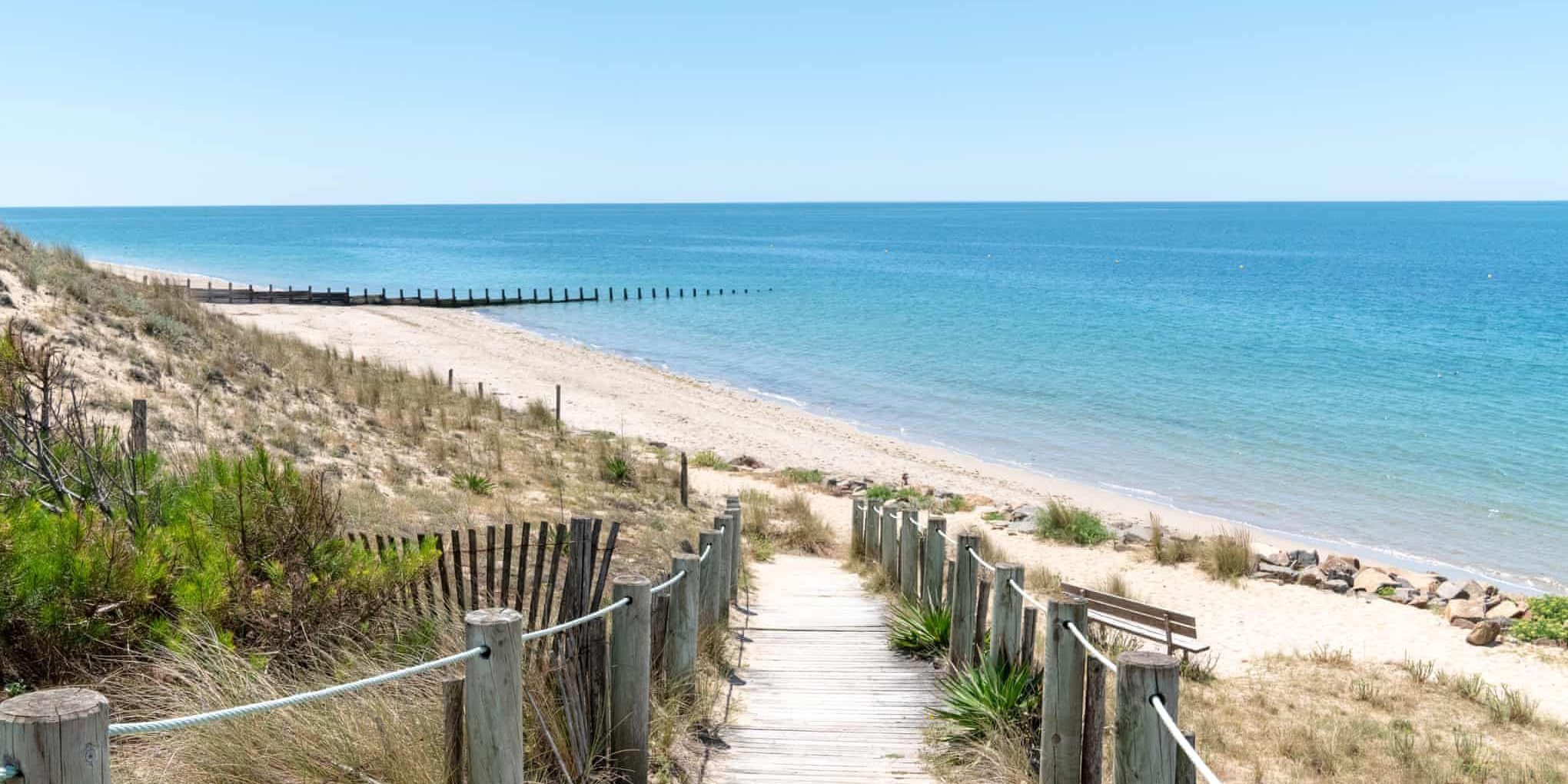Noirmoutier is a little gem on the West Coast. Read more about the 10 best things to see in Noirmoutier in Vendée! Noirmoutier has always been one of my favourite places when it comes to my hometown. By only 30 minutes’ drive from Saint-Jean-de-Monts, we would cross the famous Passage du Gois if allowed, park there and start our on-foot fishing.
The island of Noirmoutier is located in the Vendée department of the Pays de la Loire region and more particularly in the Bay of Biscay. This island is connected to the mainland by a bridge and a submersible causeway further north called the Passage du Gois. Renowned for its mild climate, it is sometimes called the “island of mimosas”. There is a rate of sunshine that will make the inhabitants of the south of France green with envy! To the north-east is Noirmoutier en l’Île, which is a bit like the small capital of the island! It covers the northern part and includes the salt marshes of Noirmoutier. You will love visiting Noirmoutier and discovering its 5 picturesque villages: Barbâtre, L’Epine, La Guérinière, le Vieil and Herbaudière.

This is the odd alternative of the Pont de Noirmoutier. The Passage du Gois is actually a road, partly paved, submerged at high tide. An original experience, the 4 kilometers of the passage can be covered on foot, by bike, or by car. Watch out for the tide: you have an amplitude of three hours per tide to cross. For example, if the low tide is at 3:00 p.m, you can cross between 1:30 p.m. and 4:30 p.m. Do not wait until the last moment. At low tide, birds are on the lookout for whatever they might put in their beaks, and shore anglers stalk other clams and cockles.
Visiting Noirmoutier Island without strongly recommending that you explore the salt marshes would be a mistake. They occupy a large part of the island and offer rather atypical landscapes. The salt workers or “Sauniers” offer tours of their own farms during the summer season. Salt has been a real economic asset for the island since the 16th century. If in the 1990s there were only 35 salt workers, today there are around a hundred offering you access to their pools.

The main town of the island, Noirmoutier-en-île occupies the entire northern tip. Discover the historic heart of the city, its alleys and the famous Banzeau district, one of the oldest (occupied since the 11th century). Noirmoutier-en-île is very dynamic, animated by many traders and restaurateurs who will welcome you with open arms, ready to offer you the best of their island. It is also a superb base for then visiting the island of Noirmoutier.
Located north-east of Noirmoutier, Le Bois de la Chaise is a real little corner of paradise, it stands out for its dense and lush vegetation: holm oaks, strawberry trees, maritime pines and mimosas flourish there in a very studied mess.
- Plage des Dames
- Anse Rouge
Further south you will find a larger family beach. Walk through small, secret beaches set with rocks or walk through immense expanses of sand.
- Plage des Sableaux


Small streets lined with low stone walls and lovely family homes on the sand: a postcard-worthy snapshot of Le Vieil. People mostly get around by bicycle or on foot, passing from street to street, almost all of them leading to the beach! Le Vieil is a peaceful village, barely unsettled by the summer crowds. Set back from the coast, immense agricultural plains connect Noirmoutier, Le Vieil and L’Herbaudière. This is where Noirmoutier’s famous potato grows, offering up its full flavour in the early days of spring. Walk through the authentic village of Le Vieil, where you can observe magnificent white houses with blue shutters, emblematic of the region. Le Vieil is definitely part of the 10 best things to see in Noirmoutier.

Located at the extreme northwestern tip of Noirmoutier Island, the Herbaudière cove served as a shelter for pilot boats entering the Loire from the 17th century. If the pontoons of the port of Herbaudière are only accessible to professionals and boat owners, it is pleasant to walk the quays of the port from end to end, to immerse yourself in this world of sailors. On the fishing section, the port entrance jetty offers a lovely view of the continental shore. We can spot Pornic and Préfailles. As you walk along the coast west from the port, you will discover a rocky point suitable for shore fishing. Towards the east, the large sandy beach of La Linière allows swimming and beach games, or even kite throwing.
The Bonhomme oyster port is located on Bourgneuf Bay in La Guérinière. This is the narrowest part of Noirmoutier Island: just 500 metres separate Bourgneuf Bay from the waters of the Atlantic Ocean. Bonhomme Port comprises a handful of oyster huts, some of which have become retail and tasting spaces, a slipway to the sea, and a cycling trail along the dyke, all of which is punctuated by the comings and goings of flat-bottomed boats called plates or lasses. This site only contains a small portion of the island’s oyster and mussel farmers; many other “huts” have been built in the polder.

An abundant cereal production and a privileged exposure to the winds explain the large number of windmills built on the island of Noirmoutier. With a peak at 22 meters above sea level, the low relief favored the simultaneous activity of 32 mills during the 19th century, an exceptional density for western France. Today you can see 23 of them, only 4 of which are partially demolished. Today, attentive owners take care of the twenty or so remaining mills. The simplicity of their lines and the harmony of volumes have always given Noirmoutier mills a special charm. The first summer visitors to land on the island fell in love with it. Over time, these “vacation homes” often even became full-fledged residences.

The Bois des Eloux is a classified site located between l’Epine and La Guérinière. It consists of maritime pines, arbutus, shrubs, roses and wild rosehips. It’s a beach-wood mix: a state forest with rugged relief. There are the highest points of the island, about 23 m (Pé de l’Herse to La Guérinière) which offer us a beautiful panorama of the Atlantic Ocean and its boundless horizon. By the sea, the vegetation is limited to immortelles and couch grass. Get lost in this breathtaking natural and wild space; the smells of sea salt will guide you to the surrounding beaches. If you come across an elf, don’t forget to ask him to tell you the legend of Eloux Wood.
Discovering the Polder de Sébastopol de Noirmoutier means discovering a protected site and an incredible regional nature reserve. Besides, you might ask yourself what is a polder? In fact, it is an expanse of artificial land invaded by water and whose level is often lower than that of the sea thanks to the dikes. In Noirmoutier, Le Polder de Sébastopol is also a unique opportunity to observe flora and fauna because the site is home to many species of birds. With the family, this is an ideal place for bird watching, as you can freely walk the landscaped trails. So we too strain our ears, we sharpen our senses and we watch for the avocets and the many butterflies. Bring a good pair of binoculars, children will love listening to nature, looking at it differently.
If you have in mind to visit the island, you should know that the island is very accessible by bike. Noirmoutier Island has more than 80 kilometers of cycle paths, with three symbolic and thematic loops. A route map is available on the Noirmoutier island website. Discovery by bike has the advantage of offering you freedom both in terms of pace and stops. As the relief is almost non-existent on the island, these bicycle rides are accessible to everyone. You can also rent bikes on site, at one of the eleven rental points available.
If you need any tips or help to build an itinerary through the island, please contact our team.
If you enjoyed this article on the 10 best things to see in Noirmoutier, check out my previous post on 4 dream islands in France.








